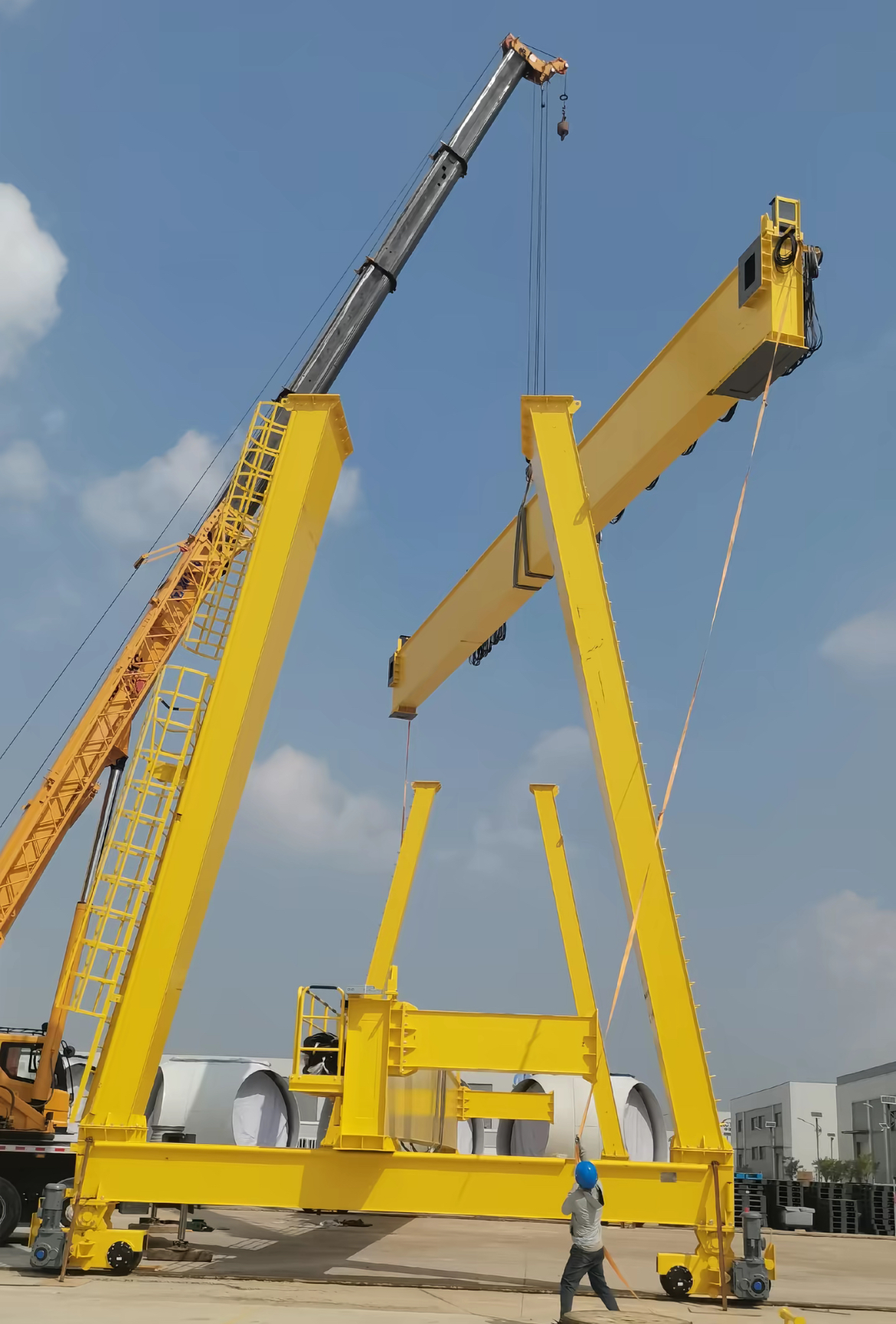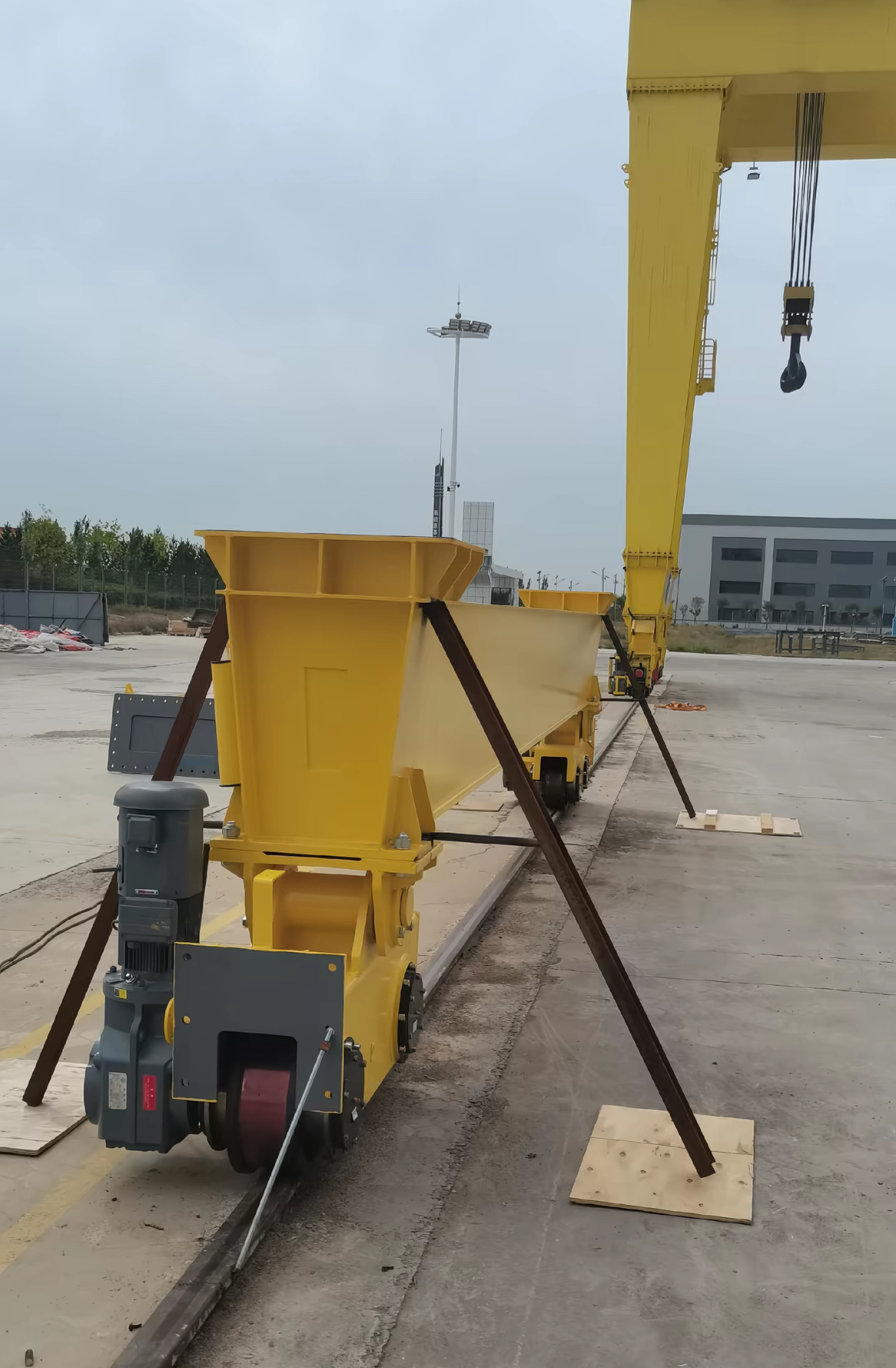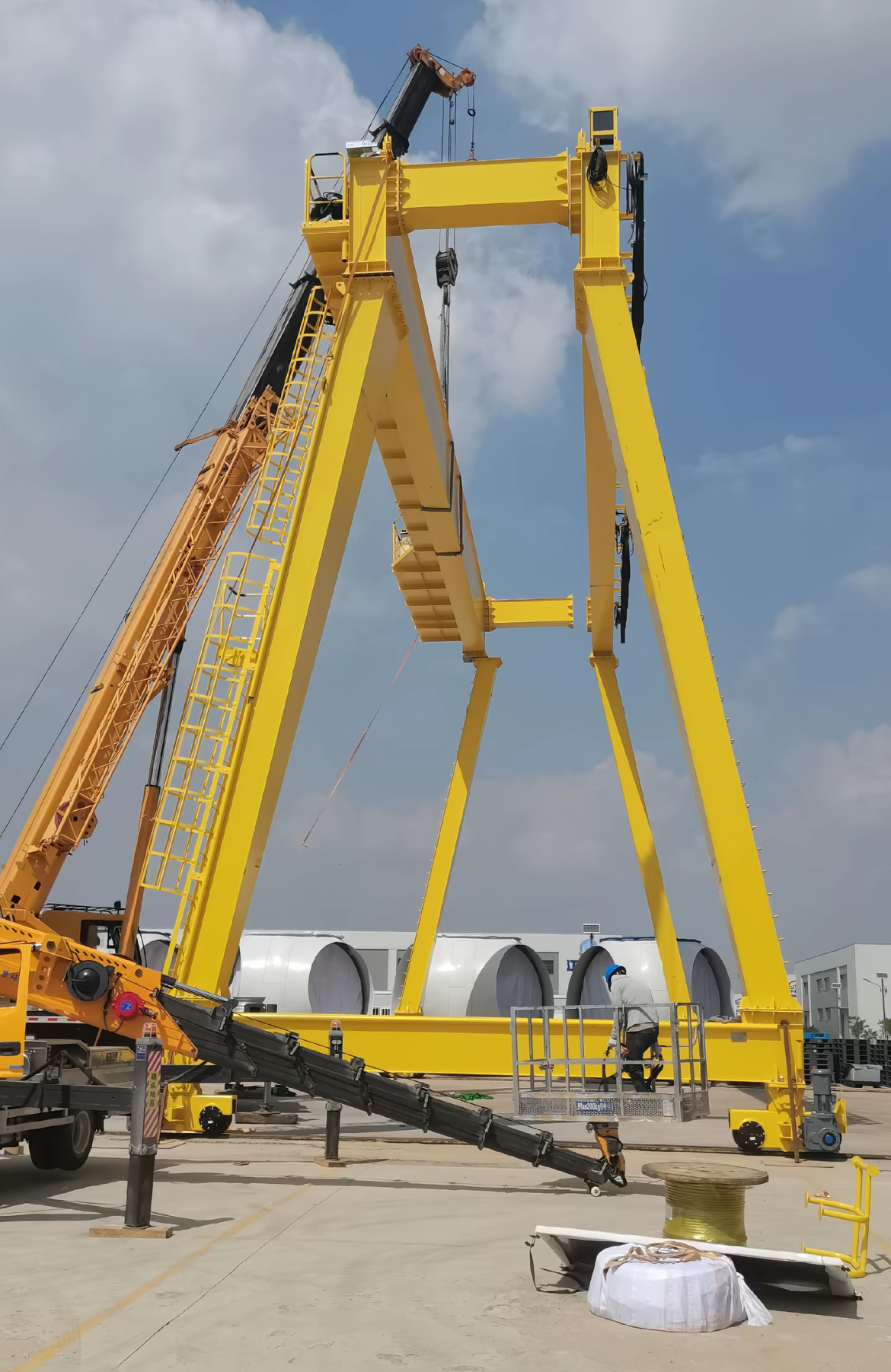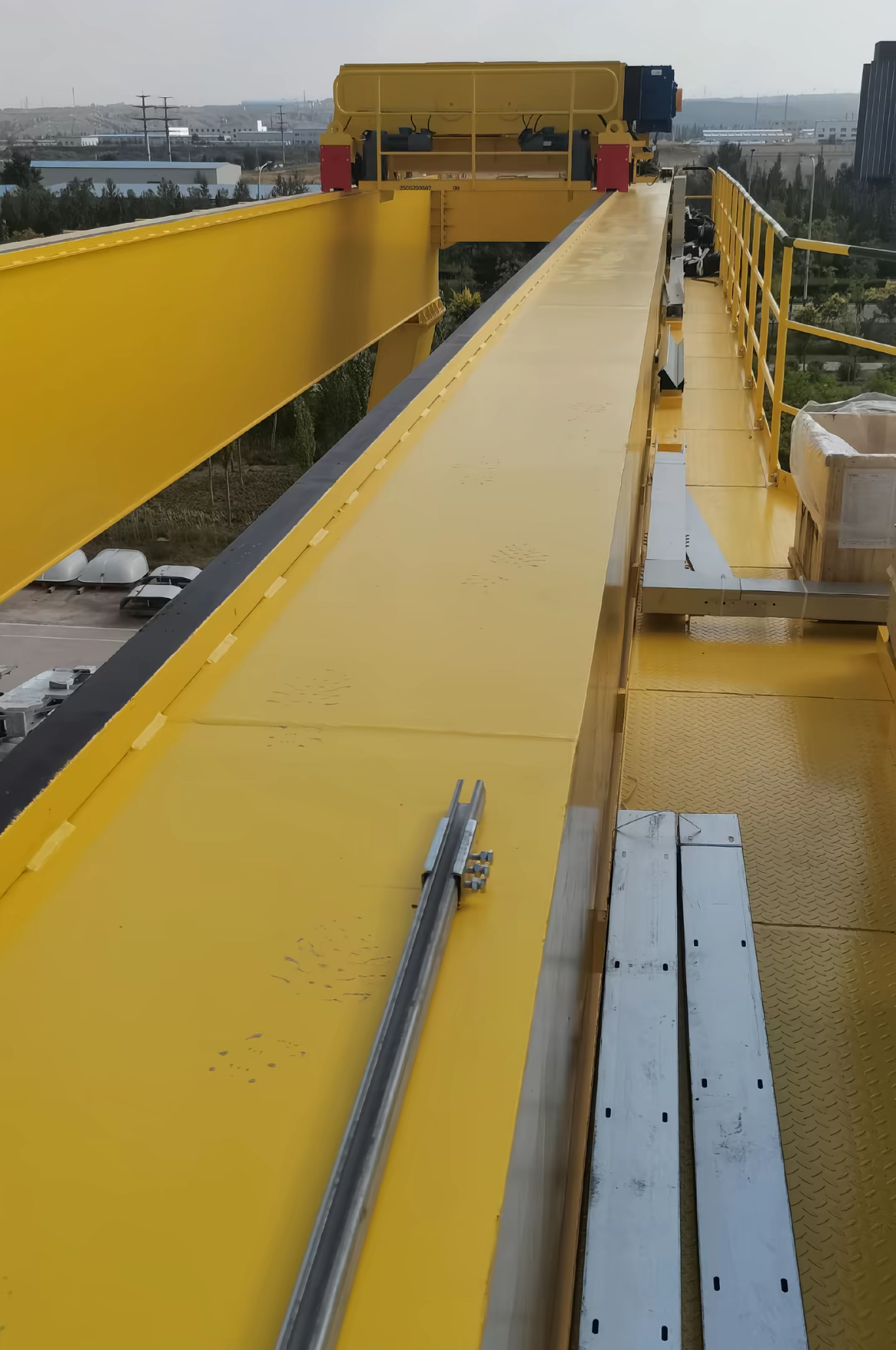Analysis and Repair Techniques for Common Faults in Double-Girder Gantry Cranes: Lack of Hoisting Power and Travel Deviation
In modern industrial and logistics sectors, gantry cranes serve as essential lifting equipment, particularly in ports, freight yards, and workshops. The double-girder gantry crane, known for its structural stability, high load capacity, and smooth operation, is especially suited for heavy-duty and long-span applications. However, under prolonged and high-intensity usage, these cranes may develop faults such as "Lack of Hoisting Power" and "Travel Deviation." This article briefly outlines the main causes and repair approaches for these common issues, providing maintenance personnel with key insights for efficient troubleshooting.

Analysis and Repair of "Lack of Hoisting Power" Fault
"Lack of hoisting power" in a double-girder gantry crane refers to a noticeable decline in lifting speed or a failure to lift loads at rated capacity, directly impairing productivity and posing significant safety risks to gantry crane operations. Such underperformance of the crane must be promptly diagnosed and resolved to maintain optimal crane functionality.
Common Causes and Repair Techniques:
Motor Fault: Inadequate power delivery from the hoisting motor, frequently resulting from short circuits, degraded insulation, aged windings, or faulty bearings, leads to diminished torque output in the crane motor.
Repair Technique: Utilize a clamp meter to monitor the crane motor's operating current. Abnormal current levels suggest internal electrical faults within the crane power system. Engage a certified electrician to test insulation resistance and winding continuity. Replace the crane motor if defects are confirmed.
Brake Maladjustment or Damage: A brake that fails to release fully creates drag, consuming power that would otherwise be used for lifting the gantry crane's load.
Repair Technique: Inspect brake clearance on the crane and ensure the thruster or solenoid has adequate travel. Adjust the brake shoe-to-drum gap for uniformity and proper operation. Replace severely worn or oil-contaminated linings promptly to restore crane braking performance.
Transmission System Issues: Degraded or insufficient gearbox lubricant, worn gears, or damaged couplings and keyways diminish mechanical efficiency in the crane's drive train.
Repair Technique: Regularly check the crane's gearbox oil level and quality, adhering to scheduled changes. Listen for unusual noises. Inspect couplings for misalignment and worn keys. Replace faulty components immediately to ensure smooth crane operation.
Wire Rope or Rigging Problems: Kinked, deformed, or poorly lubricated wire ropes increase friction against sheaves and drums on the crane.
Repair Technique: Establish a periodic lubrication and inspection protocol for the crane's wire ropes. Check for broken wires, corrosion, and deformation affecting crane safety. Replace damaged ropes on the crane. Inspect sheave grooves for wear and verify free rotation of all sheaves on the crane.

Analysis and Repair of "Travel Deviation" (Tracking Deviation / Rail Gnawing) Fault
"Travel deviation," commonly termed "rail gnawing," occurs when the wheels of the gantry crane scrub against rail flanges, resulting in accelerated wear and potential derailment. This crane malfunction is especially critical in ensuring the safe traversal of a double-girder gantry crane and must be corrected to avoid damage to the crane and rails.
Common Causes and Repair Techniques:
Rail Issues: Incorrect level, gauge, or straightness is a primary cause of deviation.
Repair Technique: Employ precision leveling instruments and theodolites to reassess rail elevation, straightness, and gauge consistency for the crane runway. Adjust rail fasteners and foundation pads to realign track geometry supporting the crane. Repair or grind misaligned rail joints that affect crane movement.
Wheel Problems: Diameter mismatch between drive wheels on the double-girder gantry crane, wheel misalignment, or uneven tread wear will cause the crane to deviate.
Repair Technique: Measure all crane drive wheel diameters with calipers; machine or replace wheels to minimize diameter deviation. Use a theodolite to check wheel alignment on the gantry crane. Correct misalignment by adjusting axle keys or shims at bearing housings.
Drive System Desynchronization: In a double-girder gantry crane with separate drives per side, inconsistent motor speeds or differential braking action induce crabbing motion in the crane.
Repair Technique: Verify that both crane drive motors operate at identical speeds. Check for matching parameter settings in frequency converters. Inspect drive shafts and couplings on both sides for slippage or looseness. Ensure crane brakes release simultaneously.
Bridge Girder Deformation: Structural distortion of the gantry crane's main girders from overloading or impact disrupts wheel alignment, causing the crane to deviate.
Repair Technique: This requires professional assessment. Specialist teams must perform metal structure inspection and alignment to restore the double-girder gantry crane's geometric accuracy and ensure safe crane operation.

Summary
Proactive maintenance is key for double-girder gantry crane reliability. Regular inspections can prevent many issues. Operators must monitor for abnormalities and stop operations to investigate faults immediately. This proactive approach ensures the gantry crane operates safely and efficiently, maximizing its service life. Proper care keeps this critical crane asset performing reliably.


